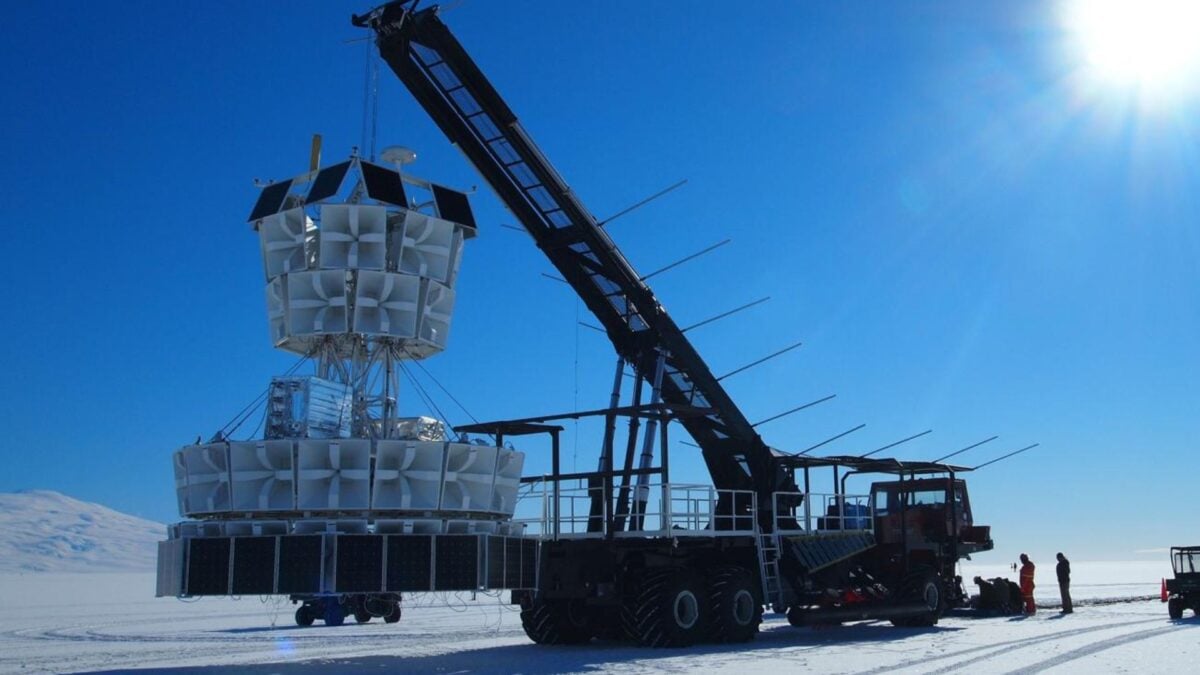A NASA-backed balloon experiment soaring high above Antarctica, initially designed to capture faint radio waves from distant cosmic events, has instead detected perplexing signals seemingly originating from deep within the Earth’s icy shell. Scientists report that these anomalous radio pulses defy our current understanding of particle physics, presenting a significant puzzle.
The ANITA Experiment’s Unexpected Discovery
The Antarctic Impulsive Transient Antenna (ANITA) utilizes a collection of radio antennas carried by NASA high-altitude balloons, flying at altitudes of 19 to 24 miles (30 to 39 kilometers) above the Antarctic continent. Over several flights, ANITA has recorded unusual radio pulses that appear to travel upwards through the Earth. Co-author Stephanie Wissel, an associate professor of physics at Penn State, explained that these signals were detected at “really steep angles, like 30 degrees below the surface of the ice.” This implies an extraordinary journey for the radio pulses, potentially traversing 6,000 to 7,000 kilometers (3,700 to 4,300 miles) of solid rock to reach the detector—a feat considered highly improbable by current physics.
According to established models of particle physics, such high-energy radio pulses should be thoroughly absorbed by the Earth’s dense material, making their detection virtually impossible if they originated from below and passed through significant rock. “It’s an interesting problem because we still don’t actually have an explanation for what those anomalies are,” Wissel stated. The research team detailed their findings in the March issue of the journal Physical Review Letters.
ANITA’s Primary Mission: Hunting for Cosmic Neutrinos
The principal objective of the ANITA experiment is to gather data on energetic events occurring in deep space by analyzing the signals that manage to reach Earth. A key focus of this endeavor is the search for neutrinos, which are subatomic particles with no electrical charge and the smallest known mass.
Neutrinos are incredibly abundant throughout the cosmos, constantly streaming through us, and typically originate from high-energy astrophysical sources such as the Sun or supernovae. However, Wissel notes that detecting these ghostly particles is exceptionally challenging due to their weak interaction with matter. ANITA is engineered to overcome this difficulty by sniffing out the radio emissions produced when neutrinos interact with the Antarctic ice sheet.
As the balloon-borne observatory drifts over the vast expanses of ice, it searches for “ice showers”—cascades of secondary particles unleashed when a neutrino collides with the ice. These particle showers generate radio signals that ANITA’s sensitive antennas can pick up. Neutrino interactions with ice can also produce a secondary particle known as a tau lepton, which subsequently decays and loses energy. This decay process can trigger another type of emission called an “air shower.” By distinguishing between ice showers and air showers, researchers can characterize the initial particle that created the signal and potentially trace it back to its cosmic origin.
Anomalous Signals: A Particle Physics Puzzle
The unusually steep angle of arrival for the anomalous signals detected by ANITA effectively ruled out the possibility that they were generated by standard ice-interacting neutrinos or the tau leptons they might produce. Wissel and her colleagues meticulously analyzed data from multiple ANITA flights, comparing the observations with sophisticated mathematical models and simulations of both cosmic rays and various types of air showers. This comprehensive analysis allowed them to systematically eliminate the possibility that ANITA was detecting other known particle-based signals.
In their quest for an explanation, the researchers then compared ANITA’s data with observations from other major neutrino detection facilities, including the IceCube Neutrino Observatory (also in Antarctica) and the Pierre Auger Observatory in Argentina, to see if these experiments had recorded similar unexplained events. This comparative analysis did not yield any answers; the other detectors had not registered anything that could account for ANITA’s strange signals. The only firm conclusion Wissel and her team can draw at this point is that the particles responsible for these bizarre radio pulses are not neutrinos as we currently understand them.
Future Probes and Lingering Questions
Scientists are hopeful that upcoming, more advanced detectors will shed more light on these enigmatic signals. At Penn State, Wissel’s team is actively involved in designing and building the Payload for Ultrahigh Energy Observation (PUEO) mission. According to Wissel, this new balloon-borne instrument will be larger and significantly more sensitive to neutrino signals, potentially offering a clearer view of these anomalies.
Wissel has ventured an early hypothesis regarding the nature of these signals. “My guess is that some interesting radio propagation effect occurs near ice and also near the horizon that I don’t fully understand, but we certainly explored several of those, and we haven’t been able to find any of those yet either,” she remarked.
“So, right now, it’s one of these long-standing mysteries,” Wissel concluded, “and I’m excited that when we fly PUEO, we’ll have better sensitivity. In principle, we should pick up more anomalies, and maybe we’ll actually understand what they are. We also might detect neutrinos, which would in some ways be a lot more exciting.” The quest to understand these strange Antarctic signals continues, highlighting the ever-evolving frontier of particle physics.











